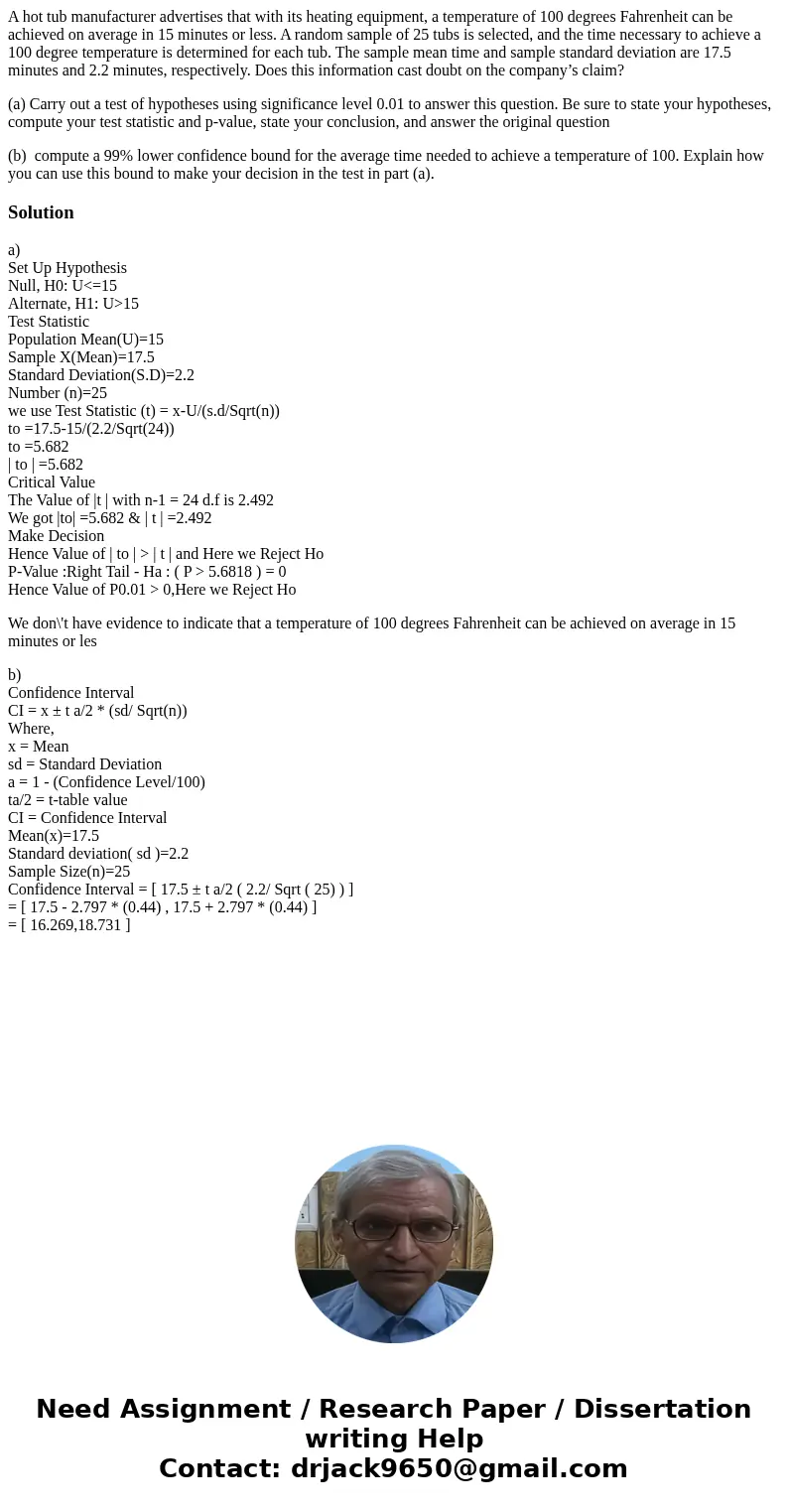A hot tub manufacturer advertises that with its heating equi
A hot tub manufacturer advertises that with its heating equipment, a temperature of 100 degrees Fahrenheit can be achieved on average in 15 minutes or less. A random sample of 25 tubs is selected, and the time necessary to achieve a 100 degree temperature is determined for each tub. The sample mean time and sample standard deviation are 17.5 minutes and 2.2 minutes, respectively. Does this information cast doubt on the company’s claim?
(a) Carry out a test of hypotheses using significance level 0.01 to answer this question. Be sure to state your hypotheses, compute your test statistic and p-value, state your conclusion, and answer the original question
(b) compute a 99% lower confidence bound for the average time needed to achieve a temperature of 100. Explain how you can use this bound to make your decision in the test in part (a).
Solution
a)
Set Up Hypothesis
Null, H0: U<=15
Alternate, H1: U>15
Test Statistic
Population Mean(U)=15
Sample X(Mean)=17.5
Standard Deviation(S.D)=2.2
Number (n)=25
we use Test Statistic (t) = x-U/(s.d/Sqrt(n))
to =17.5-15/(2.2/Sqrt(24))
to =5.682
| to | =5.682
Critical Value
The Value of |t | with n-1 = 24 d.f is 2.492
We got |to| =5.682 & | t | =2.492
Make Decision
Hence Value of | to | > | t | and Here we Reject Ho
P-Value :Right Tail - Ha : ( P > 5.6818 ) = 0
Hence Value of P0.01 > 0,Here we Reject Ho
We don\'t have evidence to indicate that a temperature of 100 degrees Fahrenheit can be achieved on average in 15 minutes or les
b)
Confidence Interval
CI = x ± t a/2 * (sd/ Sqrt(n))
Where,
x = Mean
sd = Standard Deviation
a = 1 - (Confidence Level/100)
ta/2 = t-table value
CI = Confidence Interval
Mean(x)=17.5
Standard deviation( sd )=2.2
Sample Size(n)=25
Confidence Interval = [ 17.5 ± t a/2 ( 2.2/ Sqrt ( 25) ) ]
= [ 17.5 - 2.797 * (0.44) , 17.5 + 2.797 * (0.44) ]
= [ 16.269,18.731 ]

 Homework Sourse
Homework Sourse